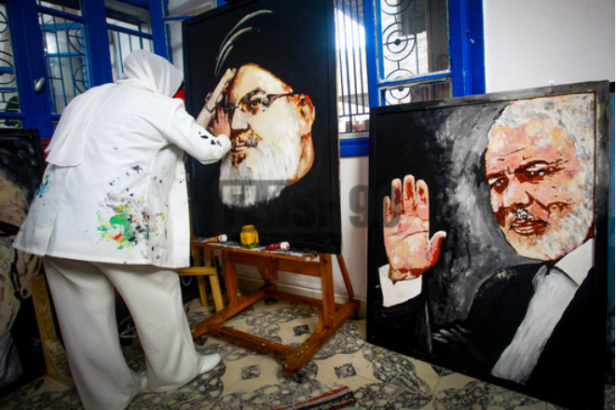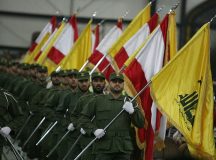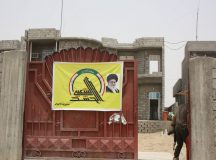Kyle Orton argues those drawing parallels to Israel’s 2006 are radically mistaken. In 2024 Israel intelligence, planning and arms are winning. What it needs now are allies that act like allies. “In a rational world, the U.S. would focus on ensuring Israel had the material and the time to deal with the Islamic Revolution’s outposts in Gaza and Lebanon: these are threats to American security and interests, too, and a friend is offering to solve the problem without the U.S. risking a single life.”
Hezbollah, the branch of Iran’s Islamic Revolutionary Guards Corps (IRGC) that controls Lebanon, joined the war against Israel on 8 October 2023, the day after the horrendous pogrom that murdered 1,200 Israelis and kidnapped 250 more by the IRGC’s Gaza-based allies, Hamas. The relentless barrage of missiles and artillery fired by Hezbollah has inflicted a steady toll of death and injury, and displaced 70,000 Israelis. In August, Israel began signalling that the war aims were being expanded from recovering the hostages and neutralising future threats from Gaza to include the return of displaced communities in the north, and in mid-September it was made official. With hours, Israel commenced a series of devastating intelligence-led operations against Hezbollah, and, on the night of 30 September-1 October, Israel announced the onset ‘limited, localised, and targeted ground raids’ against Hezbollah in Lebanon.
Many commentators could not resist the temptation to make comparisons with the 1982 Israeli invasion to extinguish the Palestine Liberation Organisation (PLO) terrorist base in southern Lebanon. The premise is that since the 1982 operation was billed as ‘limited’, and ended up with the Israel Defence Forces (IDF) in Beirut and an Israeli occupation of southern Lebanon that lasted eighteen years, so the same will happen this time. This is at best a lazy inattention to detail. The extension of the 1982 invasion was not a case of the ‘slippery slope’ or ‘mission creep’. The Israeli Cabinet decided on a limited incursion, and then-Defence Minister Ariel Sharon subverted the order in the field. Drawing generalised conclusions from this unique episode in Israel’s civil-military relations was bound to be misleading.
A similar distortion to the public conversation came from the recycling of the false history of Hezbollah being born from the 1982 conflict—the implicit, and sometimes explicit, argument being that any resistance to terrorism from Lebanon will only make it worse—despite it being known for some time that Hezbollah originates much earlier.
Three weeks into the current Israeli ground operation in Lebanon, it is clear this is nothing like 1982, and it is significantly different even from the previous round with Hezbollah in Lebanon in 2006.
Four days into the 2006 war, Israel’s air force had hit everything on its target list, and yet the Hezbollah rockets continued to rain down on Israel for the remainder of the month-long engagement because Jerusalem’s intelligence on the launch sites was so scanty. This was of a piece with the broader findings of the post-war investigation that criticised the government’s ‘severe failure’ in planning. That accusation cannot be levelled against Israel this time.
Israel has used the nearly two decades since the last war with Hezbollah wisely, gaining a far better understanding of the group and planning accordingly. Since October 2023, Israel has destroyed tens of thousands of Hezbollah missile launch sites and eliminated vast quantities of the terrorists’ weapons stockpiles, often in individual raids with hundreds of designated targets. The now-famous Mossad operation to blow up the pagers used by Hezbollah jihadists on 17 September, and then their radios the next day, was made possible by Israel’s extensive infiltration of the group—and the broader IRGC Network. The same progress in the spy-war has been used by Israel to devastate the Hezbollah command structure before any ground operations began.
Wissam al-Tawil, a commander of Hezbollah’s elite Radwan Force, was killed in an airstrike in January. In mid-June, Israel eliminated Sami Taleb Abdallah, one of the senior Hezbollah officials directing the missile attacks, and Mohammed Naame Nasser, commander of the ‘Aziz Unit’ overseeing the whole west of Lebanon, was taken out a month later. The 30 July killing in Beirut of Fuad Shukr, one of the dominating figures on Hezbollah’s executive Jihad Council, a most-wanted man for his role in the 1983 bombing of the American and French Marine barracks in Beirut—and the stunning Mossad operation that killed Hamas’s ‘political’ chief, Ismail Haniyeh, in Tehran the next day—was an indication that Israel had changed the rules of the game.
In the ten days between the pagers operation and the move into Lebanon, Israel shredded Hezbollah’s leadership cadre, striking down inter alia: Ahmad Mahmoud Wahabi, a Radwan Force leader and key trainer of Hezbollah’s military units; Ibrahim Aqil, the Operations Unit head and Shukr’s successor; Mohammed Surur, the head of Hezbollah’s drones unit; and Ibrahim Qubaisi, the missile commander, along with many of his colleagues. The culmination of the campaign, on 27 September, was the killing of the secretary-general of Hezbollah, Hassan Nasrallah, alongside Hezbollah’s military commander in the border area, Ali Karaki, and the IRGC officer overseeing Hezbollah and the Levant, Abbas Nilforoushan. It did not end there.
Six days later, Israel (very likely) killed Nasrallah’s cousin and successor, Hashem Safieddine. The Hezbollah official responsible for liaising with the ostensibly independent Lebanese security agencies, Wafiq Safa, another Nasrallah relative, seems to have survived the attempt on him two weeks ago, but dozens if not hundreds of mid-level hezbollahis—the ‘middle managers‘ that are crucial to the functioning of any large terrorist organisation—have fallen.
There is much debate in counter-terrorism circles about the value of ‘leadership decapitation’, with a general tendency to downplay its impact, especially when it concerns terrorist groups with a mature bureaucratic structure like those in the IRGC Network or the Islamic State. All things being equal, this is a good rule of thumb. But what has happened to Hezbollah is distinctly unequal: decapitation this thorough and rapid has few precedents. Recovering from the loss of decades of practical experience and competence in so many areas is not possible in a few months or even years. Replacing someone with the charismatic authority of Nasrallah may not be possible at all.
Hezbollah is facing a war with its command structure in tatters, its weapons stocks depleted, unreliable communications, and serious morale problems, from the general issue of the battering its ‘resistance’ credibility has taken to the specific issue of internal turmoil as the full knowledge there are moles in the ranks activates the Islamists’ witch-hunting habits.
This destabilisation of Hezbollah before a ground confrontation, and the intelligence-led Israeli campaign that brought it about, is a night-and-day different to the situation in the summer of 2006. The air and drone strikes that have eliminated Hezbollah’s leadership have mostly taken place in the Dahiyeh area of Beirut, the IRGC headquarters in the Levant. The pinpoint targeting has led to minimal damage to infrastructure, unlike in 2006, when much of Dahiyeh was flattened. Israel has, since 2008, invoked this example as the ‘Dahiyeh doctrine’, intending to deter Hezbollah by threatening overwhelming reprisals if Israel was attacked. So far, Israel’s upper-hand with intelligence has made this unnecessary.
The same categorical difference between 2006 and the present can be seen in Israel’s ground operations in the south. There has evidently been years of preparation, and it is paying off. There is nothing ‘hasty‘ about Israel’s activities. The IDF is advancing methodically through the towns and villages in southern Lebanon, coordinating defensive fire far better than last time and clearly well-informed by a robust espionage network about which homes and other residential buildings are storing weapons, and where the entrances to Hezbollah’s tunnels are. The destruction of Hezbollah’s tunnel network in the border zone has not become a major feature of the Israeli operation at this point, but it seems likely to become more of a priority over time.
United Nations Security Council Resolution 1701, which ended the 2006 Israel-Hezbollah war, called for Hezbollah to withdraw north of the Litani River, ‘12 miles from the Israeli border’. As yet, the IDF has not made an obvious move to push as far as the Litani: whether that is because the operation is conceived as more limited than that, or the IDF is building up to it, time will tell. The major complication in the short term if Israel’s intention is to secure the U.N.-mandated buffer zone appears to be political, primarily the U.N. itself.
The United Nations Interim Force in Lebanon (UNIFIL), present in Lebanon since 1978, was given the mandate after 2006 of ‘taking steps towards the establishment between the Blue Line [the Israel-Lebanon border] and the Litani river of an area free of any armed personnel, assets and weapons other than those of the Government of Lebanon and of UNIFIL deployed in this area.’ UNIFIL has failed at this, and appears to have done so willingly.
There are tunnels a stone’s throw from UNIFIL bases that the ‘peacekeepers’ must have watched Hezbollah construct, and kept quiet about. This complicity with Hezbollah running roughshod over Resolution 1701 perhaps explains the somewhat hysterical reaction of UNIFIL in trying to thwart Israel’s effort to enforce 1701. No doubt some UNIFIL troops, especially the Irish contingent, sincerely believe the anti-Israel narratives and regard themselves as bravely protecting Lebanese civilians by offering themselves as human shields for Hezbollah. But the rational among them have an equal stake in preventing Israel getting a look at what has gone on under UNIFIL’s watch in southern Lebanon for the last eighteen years.
Meanwhile, the United States has contrived an approach to Lebanon that might politely be called incoherent. The U.S. is reportedly trying to capitalise on the weakness of Hezbollah after Israel mauled the group to install a president in Beirut—a post vacant for two years—who is not Suleiman Frangieh, the candidate insisted upon by Nasrallah. A focus on rearranging the faces in the Lebanese government, such as it is, is strange, though it does conform to the long-term U.S. policy based on a fantastical theory of how Hezbollah’s hold on all actual power in Lebanon can be loosened. But the U.S. is combining this focus with a call for a ceasefire, which would alleviate the pressure on Hezbollah, removing any incentive for Hezbollah to make even cosmetic concessions. Shortening Israel’s window for action in Lebanon seems like the only potential tangible outcome of this American diplomacy.
In a rational world, the U.S. would focus on ensuring Israel had the material and the time to deal with the Islamic Revolution’s outposts in Gaza and Lebanon: these are threats to American security and interests, too, and a friend is offering to solve the problem without the U.S. risking a single life. It can be added that Israel is bringing belated justice for many Americans—a significant number of the terrorist operatives Israel has eliminated over the past year have had American blood on their hands. But America has always seemed to struggle with such calculations. The late Bernard Lewis used to quote a Turkish General, who said to him in the 1950s, as Turkey was brought into NATO: ‘The real problem with having the Americans as your allies is you never know when they will turn around and stab themselves in the back.’




































